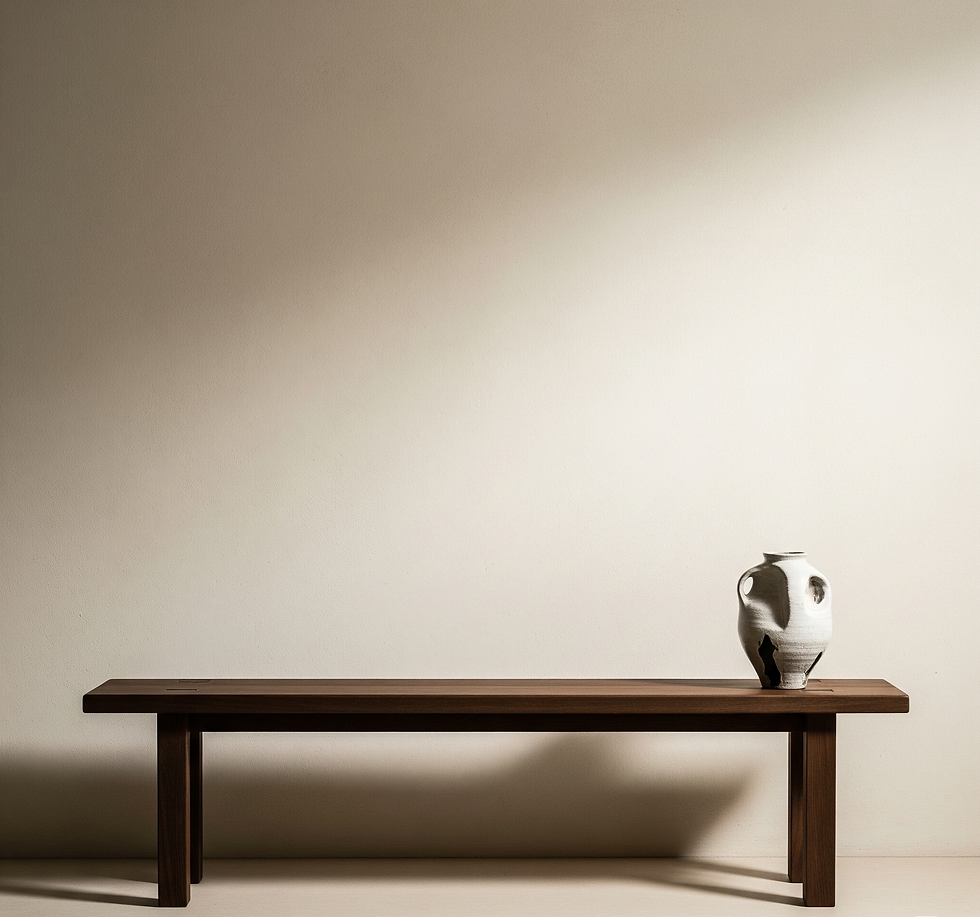The Soul of a Room: Our Approach to Curation, Editing, and Personal Storytelling Through Objects | Luxury Interior Design
- Gianna

- Jul 10
- 3 min read
Updated: Aug 9

The Perfectly Soulless Room
We have all been in a room that is, by all technical measures, perfect. The furniture is impeccably placed, the lighting is flawless, the colours are harmonious. And yet… it feels strangely cold. It is a space to be admired, but not one to be lived in. It has a beautiful face, but no soul.
What gives a room its soul? It is not the expense of the furniture or the trendiness of the finishes. It is the final, intimate layer of objects that tells a human story.
This is the layer that is most often left to chance, resulting in cluttered surfaces or impersonal voids. At our studio, we believe that the placement of these personal treasures is not an afterthought, but the final, vital act of design. It is the process of transforming your house into your biography, written in three dimensions.
Beyond Decoration - A Home as a Biography - How Do You Use Storytelling Through Objects?
The objects in your home are the words and sentences of your life's story. A stack of art books reveals a passion. A slightly worn ceramic bowl inherited from a grandparent speaks of lineage and love. A framed photograph, a piece of coral from a memorable holiday, a child’s first sculpture—these are not clutter. They are chapters.
Our goal is not merely to decorate your home, but to help you articulate this story. We do this through a deliberate, three-part process that balances artistry with personal meaning: Curation, Editing, and Placement.
Our Method for Creating a Soulful Space

1. Curation: The Thoughtful Gathering
A soulful room is a collection, not a catalogue. Curation is the art of gathering objects that hold meaning, beauty, or memory. This is a collaborative treasure hunt. We start with what you already own and love, rediscovering forgotten pieces tucked away in cupboards. We then identify the gaps, seeking out new pieces that resonate with your story.
A curated space masterfully mixes high and low, old and new:
An antique wooden box next to a modern ceramic vase.
A major piece of artwork in one room, and a simple, beautifully framed postcard in another.
An inherited armchair, lovingly re-upholstered, holding its own against a sleek, new side table.
The only rule is that every object must earn its place by being loved, by being beautiful, or by telling a part of your story.
2. Editing: The Quiet Power of 'No'

This is perhaps the most crucial—and most difficult—step. Anyone can fill a shelf. The art is in knowing what to leave out. Just as a good writer removes unnecessary words to make a sentence stronger, a good designer removes superfluous objects to give the remaining ones more power.
We create breathing room. This "negative space" is not empty; it is an active element of the design. It allows the eye to rest, to appreciate the form of a single, beautiful lamp, or the unique texture of a handmade bowl. By editing, we turn a collection of things into a curated gallery. We are ruthless on your behalf, ensuring that only the most meaningful pieces take centre stage.
3. Placement: The Artful Conversation
Once we have our curated and edited collection, the final act is placement. This is where we arrange objects not just on a surface, but in relationship to one another, creating a series of small, compelling visual stories, or "vignettes."

We think like a sculptor, considering:
Scale and Height: We vary heights to create a dynamic rhythm. A tall, slender lamp next to a low, horizontal stack of books. A tall vase on one side of a mantelpiece, balanced by a smaller, heavier object on the other.
Texture: We create interest by contrasting textures. The rough surface of a stone object against the smooth gloss of a ceramic, the cool metal of a tray against the warm wood of a table.
Grouping: We group objects to create impact. A collection of three or five similar items (always odd numbers!) feels more intentional and powerful than a single one.
A beautifully styled surface is a balanced composition that feels effortless, as if the objects have settled there naturally over time.
Your Story, Beautifully Told
The process of curating and arranging the objects in your home is the final brushstroke that brings the entire picture to life. It is what ensures your space is not a transient reflection of a trend, but an enduring and authentic portrait of you.
This is not about creating a perfect, static display. It is about creating a living, breathing home that has layers of meaning, that invites curiosity, and that wraps you in the comfort of your own story, beautifully told.


Comments